
Teacher aides in Victoria are often called integration aides. They support students and teachers in a range of activities in mainstream classrooms and special need’s schools.
Completing a high-quality teacher aide course in Victoria has never been easier. With more than 2250 schools across Victoria and a burgeoning education system, a stable yet rewarding career as a teacher aide is more than achievable. This article will show you how to become a teacher aide or integration aide in Victoria.
A major step in becoming a teacher aide in Victoria is completing a nationally recognised course such as the introductory CHC30221 Certificate III in School Based Education Support. Almost all adult learners however, enrol in the higher-level CHC40221 Certificate IV in School Based Education Support or the Teacher Aide Combo which saves time and money while boosting your skills and confidence. ITAC is the only provider offering a true teacher aide 'combo' in Australia.
With more than 2250 schools across Victoria and a burgeoning education system, a stable yet rewarding career as a teacher aide is more than achievable.
ITAC’s nationally recognised teacher aide courses are now available by online learning from anywhere in Victoria. Only at ITAC will you learn industry best practice, research-based skills, strategies and techniques based on Australian and international research. In fact, our students learn many of the skills that teachers learn at university.
Below you will read about teacher aide courses in Victoria including enrolment options, schools, placement, and various other details specifically tailored for Victorian students. For current information about a particular course, follow the links below:
If you're thinking about enrolling in a teacher aide course, read our article on how to choose a training provider by clicking here.
1. Briefly, what do I need to know about teacher aide courses in Victoria? 2. Can I study an integration aide or teacher aide course online? 3. What do you mean by 'research-based' and why is it so important? 4. What tips do you have for choosing the best provider? 5. Are these courses difficult and how long do they take? 6. What are the main differences between each teacher aide course? 7. How are teacher aide courses structured? 8. Where can I get additional information about teacher aide courses in Victoria? 9. How do I become a teacher aide in Victoria? 10. How much do teacher aides get paid or earn in Victoria? 11. Is it easy to find a job as an integration aide or teacher aide in Victoria? 12. Are teacher aides actually called integration aides in Victoria? 13. What is it like to study a teacher aide course in Victoria? 14. Should I enrol in a teacher aide course at TAFE or with ITAC? 15. What are the most important take-aways from this article? Final thoughts

Teacher aides in Victoria are often called integration aides. They support students and teachers in a range of activities in mainstream classrooms and special need’s schools.
Too busy to read this entire article? Here are the main talking points:
Each unit has generic content and an integrated approach means you only get assessed on this content once - a unit by unit approach means you are assessed on the same content up to 17 times.

Above: Schools hire staff who can implement instructional techniques such as guided and shared learning. Only at ITAC will you learn the best practice instructional techniques that schools want.
Investing in your own education is an incredibly wise investment and you want to ensure that you get your career off to a good start by learning from a reputable provider.

Online study is the most popular study mode because of its flexibility and convenience. It should be combined with a range of support strategies such as live webinars and e-learning modules.
Read our article about studying teacher aide courses online by clicking here.
As discussed in the previous section, all of our teacher aide courses in Victoria are available by online mode. It should also be pointed out that the term ‘online’ can mean many different things. Every provider develops their own courses in a different way - some better than others.
Ask your provider about the support services that they offer. Can you talk to your trainer at any stage over the phone? Do they offer weekly live webinars? Do they visit you in the workplace? Ensure they develop their own materials such as learner guides and ensure the provider only delivers teacher aide courses (you want a specialist provider). Do not enrol in courses delivered one unit at a time as this will unnecessarily prolong your studies.
It is important not to short-change yourself by enrolling with the cheapest provider you can find. As the saying goes - you get what you pay for. Investing in your own education is an incredibly wise investment and you want to ensure that you get your career off to a good start by learning from a reputable provider.

Can you name 5 strategies that the teacher aide in this image is most likely using to facilitate this activity? Our students could name 20 or more. Learn best practice teaching and learning strategies only at ITAC.
We often use the term ‘research-based’ and ‘best practice’ to describe our courses. So, what exactly does this mean? In simple terms, when we develop our courses, our expert trainers (all former teachers) comb through the research from Australia and around the world to find what works. We look at what teachers are taught in universities, the skills that governments want their teachers to have and what the research says about teacher aides and their effectiveness. Here are just two examples that have informed our course content in some way:

The teacher aide pictured is implementing a series of teaching and learning strategies such as those that you will only learn at ITAC.
Practically speaking, this means that we base our teacher aide courses around a range of practical strategies, skills and techniques that are used by high performing teachers, teacher aides, schools and governments around the world - including Australia. In fact, ITAC students learn many of the same strategies that teachers learn during their university studies. Depending on your course, you will learn some of the following with ITAC:
You will only find these and many other teaching strategies in one of ITAC’s research-based, best practice teacher aide courses. While most providers teach a few strategies, at ITAC you will learn dozens, if not hundreds of practical and effective strategies and techniques making you an expert in your new profession.
You want a provider who ONLY teaches education support, so you know they ‘live and breathe’ teacher aide courses - it's their raison d'etre.
So, which course is for you?
the introductory:
the higher-level special needs course:
or the best value course with maximum employability:
Most adult learners take around 300 hours.
To answer the second part first, both the CHC30221 Certificate III in School Based Education Support and the CHC40221 Certificate IV in School Based Education Support are planned to take approximately 6 months (26 weeks or 600 hours). This is based on a student who has no (zero) experience with children and has never worked (in any job in any sector), and has never studied before. Many students will finish much sooner especially those who have their own children (as many of the concepts in these course are relatable and transferrable). Most adult learners take around 300 hours.
For the majority of students, our education support courses are not that difficult although each student (regardless of ability and experience) will still need to dedicate a certain amount of time each week in order to be successful. However, there are no essays to write and the courses are very practical. There is little in the way of memorising facts or technical information.
That is not to say that this course does not take time; even students with plenty of prior knowledge will still need to read through the materials, complete activities, submit assessments and so forth. We try to encourage students to devote at least 10-12 hours per week to their learning.
We get many questions asking about the differences between our nationally recognised teacher aide courses in Victoria. To save you time, we've put together a chart for easy comparison.
Teacher Aide Courses in Victoria
Code |
CHC30221 |
CHC40221 |
TAC |
| Level | AQF Certificate III | AQF Certificate IV | Certificate III and Certificate IV |
| Full title | Certificate III in School Based Education Support | Certificate IV in School Based Education Support | Teacher Aide Combo |
| Units | 15 units of competency | 17 units of competency | 4 key modules |
| Nationally recognised | Yes | Yes | Yes |
| Online mode | Yes | Yes | Yes |
| Modules | 3 modules | 4 modules | 4 modules |
| Skill level | Basic - intermediate | Intermediate - advanced | Intermediate - advanced |
| Duration | 600 hours for someone with no experience with children or prior training | 600 hours for someone with no experience with children or prior training | 600 hours for someone with no experience with children or prior training |
| Placement | 100 hours in a local school (usually mainstream) | 100 hours in a local school (usually special needs) | 100 hours in a local school (usually special needs) |
| Placement location | Any registered school k-12 | Any registered school (usually special needs) | Any registered school (usually special needs) |
| Job outcome | Teacher aide, teacher assistant | Integration aide | Integration aide |
| Job location | Mainstream classroom | Mainstream classroom, specialist program, remedial program, special school | All locations |
| Kindergarten | Yes | Yes | Yes |
| Pre-primary | Yes | Yes | Yes |
| Primary | Yes | Yes | Yes |
| High school | Sometimes | Yes | Yes |
| Senior school | No | Yes | Yes |
| Special school | No | Yes - often | Yes - often |
| Specialist program | No | Yes - often | Yes - often |
| Job prospects | Medium depending on area and quality of training | High depending on area and quality of training | Very high depending on area and quality of training |
| Job stability | Medium - increasing with experience | Very high - increasing with experience | Very high - increasing with experience |
| Independence | Low but may increase with experience | Medium depending on quality of training | High depending on quality of training |
| Instructional strategies | Basic strategies such as modelling, worked examples, reading, and writing strategies. | Basic and intermediate strategies such as explicit instruction. Some advanced strategies such as metacognition. | Combination of CHC30221 and CHC40221 and some additional strategies. |
| Behaviour techniques | Able to employ several basic behaviour management strategies. | Able to employ 10-12 basic behaviour management strategies and several advanced. | All of CHC30221 and CHC40221 plus some additional strategies. |
| Knowledge | Basic knowledge of teaching strategies, programs, policies, safety, and requirements of the job role. | Intermediate knowledge of teaching strategies, programs, policies, disabilities, safety etc. | All of CHC30221 and CHC40221. |
| Graduate outcome | Work effectively in a mainstream classroom under the direct guidance of a teacher. | Work effectively with special need’s students in either a mainstream classroom or a special school. | All roles from both CHC30221 and CHC40221 |
As you can see from the table above:
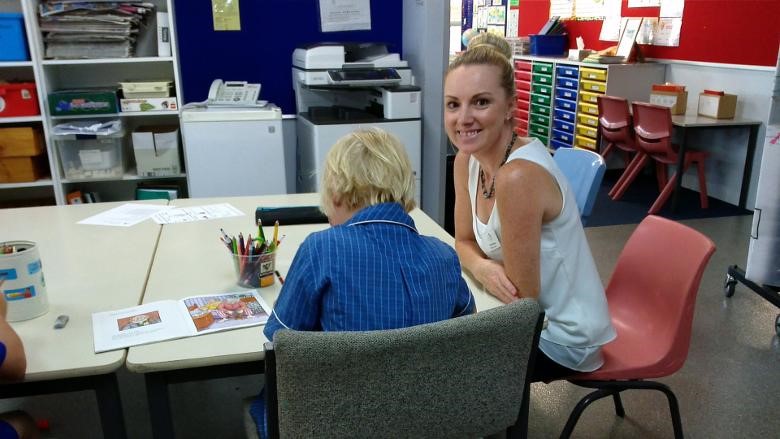
Pictured: ITAC student on placement implementing best practice teaching strategies. Her school was so impressed that she was offered a position in the school due to how well she implemented instructional and behavioural strategies. Could this be you in a few months from now?
ITAC's teacher aide courses are divided into three components. The first component is the learning. This probably takes up the most amount of time but is also the most enjoyable. The learning tasks include attending class (if class based), live webinars, watching lectures and pre-recorded webinars, reading the learner guide, various activities, and completing interactive e-learning modules.
The second part of your teacher aide course is the assessments. There are no essays or long reports. You should be wary of any provider that asks you to write a 2000-word report (or any report/essay for that matter). It is our opinion that reports and essays have no place in education support courses and are not relevant to your work as a teacher aide in Victoria. This applies to both courses including the higher-level CHC40221 Certificate IV in School Based Education Support. Most of your assessments are short answer questions.
There are no essays or long reports.
If you are considering enrolling in an integration aide or a teacher aide course, we highly recommend that you enrol with a provider who is willing to provide samples of their learning and assessment materials. This is so you know exactly what you are getting into and there are no hidden surprises. You can see our course samples here.
The third part of your course is your work placement. The work placement is a mandatory component and you will need to complete a minimum of 100 hours in a registered school - normally in your local area. You can even complete your placement in a school where your child attends albeit not in the same class. The placement is an opportunity for students to put into practice all of the things that they have learnt in the theory parts of the course. Finally, a friendly ITAC trainer will visit you on placement to help improve your professional practice. Regardless of which provider you choose, ensure they visit you on placement as schools expect a site visit.
Need to know more? Have additional questions? We have developed and published Australia’s most detailed, accurate, and practical articles about studying and working as a teacher aide. Click on any link below to open the article in a new tab.
Teacher Aide Courses in Victoria: Additional info
| Link | Description |
| How to become a teacher aide | Learn how to become a teacher aide by reading our step by step ‘how to’ guide with added hints and tips. |
| What do teacher aides do? | Learn what teacher aides in Victoria (often called integration aides) do in their day to day work. |
| Courses and qualifications for teacher aides | Learn how to improve your skills and knowledge including accredited and non-accredited courses for teacher aides in Victoria. |
| Teacher aide pay and salary | Learn about the pay you can expect to earn after completing a teacher aide course such as the CHC30221 Certificate III in School Based Education Support in Victoria. |
| Teacher Aide Courses Online | Learn about studying a teacher aide course online from anywhere in Victoria. |
| How to choose a training provider | Learning how to compare and select a training provider with our detailed guide. |
| Integrated course structure | Studying a course that is designed with an integrated structure removes the duplication found across units. This means a huge time-saving compared to a unit-by-unit course. |
To become a teacher aide or integration aide in Victoria there are a range of steps that you need to follow such as completing a course with a reputable provider, obtaining your clearances and applying at a dozen or so schools.
Below are the main steps that we recommend in order to give yourself the best chance of becoming a teacher aide or integration aide in Victoria (or anywhere in Australia for that matter):
Step 1.
Obtain a nationally recognised qualification through a reputable provider. This means the CHC30221 Certificate III in School Based Education Support or the CHC40221 Certificate IV in School Based Education Support. Schools need to know that you have certain skills and knowledge such as the knowing how to supervise students and what you can and cannot do in terms of behaviour management.
Ensure that you enrol with a provider who will teach you a range of best practice instructional strategies as these skills are what schools look for. If you can demonstrate to schools that you have this knowledge, you are more likely to be offered work on or after your placement. Most providers do not teach instructional strategies.
Step 2.
Prepare your resume, clearances to work with children and introduction letter.
Step 3.
Think carefully about where you want to work and where you don't want to work. For example, do you want to work in government or non-government schools, or both? Our advice is to not be fooled by the perception many have of some schools being more challenging than others – some of the best-behaved classes are in public schools and some of the worst we have ever seen are in private schools! Make a list of your top 20 schools in order of preference.
If you are more interested in a private or non-government school, you could seek employment in a Catholic school such as John Paul College, an Anglican school such as Christ Church Grammar School, a Montessori school such as Elonera Montessori School, or any number of other religious-based or non-affiliated schools.
If you are more interested in government schools, you might consider a primary school such as Anakie Primary School or Wonthaggi North Primary School, a secondary or high school such as Beaufort Secondary College or Altona College, or a special needs school such as Ashwood School.
For more detailed information and to search for schools in your local area, visit the government’s online search application here, the Department of Education and Training website or Independent Schools Victoria website here.
Approach your top 6 schools by physically going to each school. Ask for your name to be put down on their relief or supply list.
Step 4.
Approach your top 6 schools by physically going to each school. Ask for your name to be put down on their relief or supply list. This is the list of casual staff (also known as supply staff). There will normally be someone at the front office who oversees relief work e.g. an admin person. The person who is in charge of relief work will have a list of people that they call if a staff member calls in sick or can’t attend work for whatever reason. You want to be on that list, and you want the person in charge of it to know that you have enrolled in the best teacher aide courses in Australia - with ITAC.
Many schools tell us that they cannot find enough relief staff - especially special needs and high schools. Don’t forget to consider special schools especially - they are often co-located with a main school and are overlooked by many jobseekers. They are actually their own separate school albeit located on the same site as the mainstream school - apply to them separately. You will also be paid more to work in special schools.
Step 5.
Be persistent. Continue asking on a regular basis (within reason e.g. every 6 weeks or so) and keep applying for jobs as they come up. Always dress professionally. If you are not getting much work within 6 weeks or so, apply at the remaining schools on your list. Physically go to each (not email or phone).
Sometimes people are lucky and walk straight into a dream position however that is more of an exception than the rule. Most of the time, you will need to put in some effort. Once you get a shot in a school do the best you can and put all the skills and knowledge that you have learnt in your best practice teacher aide course into action. At the end of the day, ask the teacher how you went and show them that you are eager to improve – be reflective (you will learn reflective practice in any of ITAC's courses).
Once you have done a few days of relief work at a school, you will probably get called in more and more and eventually be offered a contract. If you've been employed as relief throughout the year, you will most likely get first option at contracts as they pop up. Schools will reward your loyalty and they prefer to hire people that they know. In fact, if you are exceptionally good at your job, there is a chance that a position will be created for you – one reason for why enrolling with a reputable provider is a must!
The pay range for teacher aides in Victoria starts at around $23-$24 per hour at the low end and goes up to about $32 - $34 at the higher end. On average we estimate that most integration aides or teacher aides in Victoria can expect to earn approximately $32 per hour.
Some websites estimate that teacher aides are actually earning less than this at around $25 - $27 per hour. However, we believe this is incorrect as it's the not the average, but the middle point between the bottom and top pay tier. In reality, the majority of teacher aides in Victoria work with special need’s students and are therefore towards the top of the pay scale.
Your expected salary depends on a range of factors such as:
If you are working in a special school you will be paid at the top or towards the top of the pay scale. If you are working with special needs in a mainstream classroom (referred to as an inclusive classroom), you will be paid somewhere in the middle.
If you are working in mainstream but not with special needs students, the salary is slightly lower again. In these positions, staff assist the teacher with general classroom activities such as preparing resources, cleaning, supervision and general learning support e.g. reading to children.
Special needs teacher aides are paid more due to the fact that they are tasked with supporting students who have complex needs, often requiring an individual behaviour and/or education plan. They usually hold the CHC40221 Certificate IV in School Based Education Support.
Generally speaking, integration aides and teacher aides earn about $1000 per week less tax in Victoria. The reason they earn about $1000 per week is because most integration aides work approximately 32 hours per 5 day working week. Very few integration aides work 38 hours per week.
There are also a range of other options available to integration aides such as working in agricultural schools, libraries, or specific programs such as Indigenous programs. These specialist programs often attract a higher rate of pay.
The short answer to this question is 'Yes' - for the most part. There are thousands of schools in Victoria and thousands of positions become available every year. This is because many integration aides retire, change jobs, transfer etc. Also, many work part-time or casual meaning one full-time position can be filled by 2 or 3 staff.
There are thousands of schools in Victoria and thousands of positions become available every year.
A lot of schools have more teacher aides than teachers. In a special need’s class for example, there might be a single teacher who is accompanied by a 4-6 teacher aides supporting students one-on-one.
Generally speaking, relief and casual work is easy to find especially if you dress appropriately, apply at a number of schools and hold one or two nationally recognised qualifications from a reputable provider. If you skipped straight to this section, the three courses you could enrol in are the:
It is essential that you hold a qualification from a reputable provider. If you enrol with the cheapest online course you can find, it is possible that a school may not be confident in your skills – in a competitive job market, every advantage helps and being trained by a reputable provider is one way to stand out.
Regardless of who you enrol with, ask the provider for a list of best practice teaching and behaviour strategies that you will learn in your course. Without these skills, your employability drops considerably as schools look for these specific skills.
Integration aides and teacher aides are in fact the same thing and the two terms can be used interchangeably. 'Teacher aide' is the broad term used internationally as well as by the general public - we use it to prevent confusion and so the general public know what we are talking about. Very few people outside of the education sector know what an integration aide is and what they do.
In some respects, the term integration aide may be slightly more specific in that it refers to teacher aides who work with special needs students. Special needs is a term used to describe students with a range of additional support needs such as disabilities and disorders like autism, FASD, and ADHD to name a few. They often, but not always, attend special schools.
As you may have inferred from the title itself – integration aides help students with disabilities and disorders to integrate into mainstream classes. This enables these students to complete their education alongside non-disabled children of the same age.

Above: Become the best teacher aide your school has ever seen by studying a research-based, industry best practice teacher aide course with the leader in teacher aide training: ITAC. To be a high performing teacher aide you will need to study a range of teaching strategies as can be seen in the picture above: scaffolding, explicit instruction, worked examples, feedback, questioning skills, modelling, guided and shared learning and many others. Learn these and other skills only at ITAC in either the CHC30221 Certificate III in School Based Education Support or the CHC40221 Certificate IV in School Based Education Support.

Above: Well-trained and qualified teacher aides in Victoria can take on higher-level responsibilities such as managing small group activities and programs, as pictured above. But first you will need to enrol and study a range of best practice teaching strategies such as those which you will only learn at ITAC. This includes, among others, reading and writing strategies, scaffolding, formative assessment, graphic organisers, KWL charts, think-alouds and many others!

Above: Best practice skills such as providing feedback, rapport building, setting goals, helping children to achieve goals, and metacognitive skills are the bread and butter of all high performing teacher aides in Australia. The teacher aide in this picture is implementing these and many other strategies including a range of behaviour management techniques. To become a high performing teacher aide, you will first need to enrol in a nationally recognised teacher aide course with a reputable provider such as ITAC.

Above: Teacher aides don’t just work in literacy and numeracy programs; they support student learning and development across the curriculum. In this image you can see the teacher aide supporting an arts and craft activity. Art is one of the core subjects in the Australian Curriculum – something you will learn all about in a nationally recognised teacher aide course such as the CHC30221 Certificate III in School Based Education Support or the CHC40221 Certificate IV in School Based Education Support.
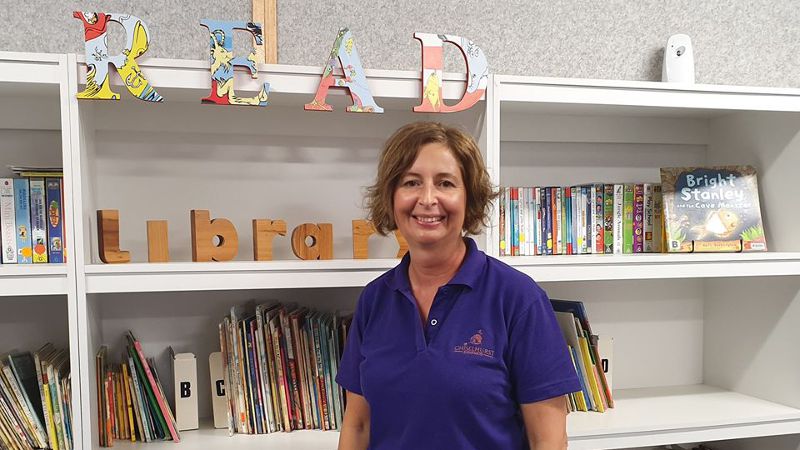
Above: An ITAC graduate who recently finished the 100-hour placement for her CHC30221 Certificate III in School Based Education Support shows us the extensive selection of reading materials she was able to access and use in her reading program. Thanks to the best practice, research-based techniques and strategies from her nationally recognised teacher aide course in Victoria, this student is now happily employed in her local school. We train thousands of teacher aides just like the one pictured here – could this be you in a few months?
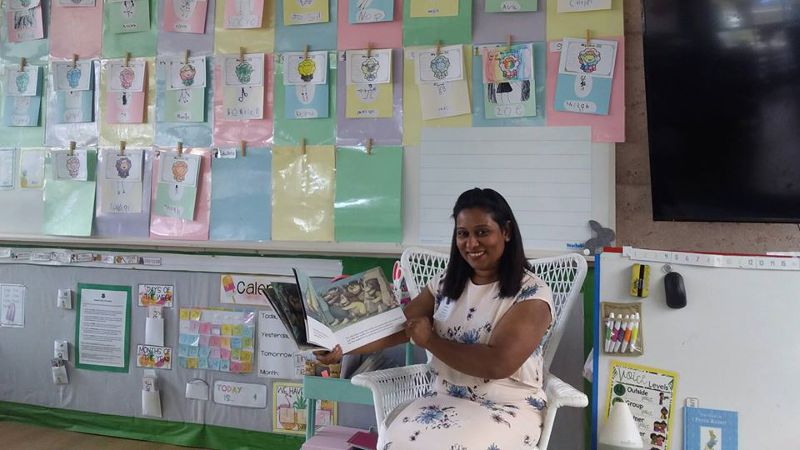
Above: Many teacher aides spend a lot of their time helping students to develop their reading, writing, spelling, vocabulary and grammar skills/knowledge. Unfortunately many teacher aide courses fail to teach students how to effectively implement reading and writing support strategies such as phonics, self-questioning, targeted interventions, consolidation, pre and post reading activities, active reading, writing to learn, scanning, skimming, basic writing skills and many other essential strategies that you need to know! Ensure that you give your skills and your career a boost by enrolling with a world-leading teacher aide training provider: ITAC.
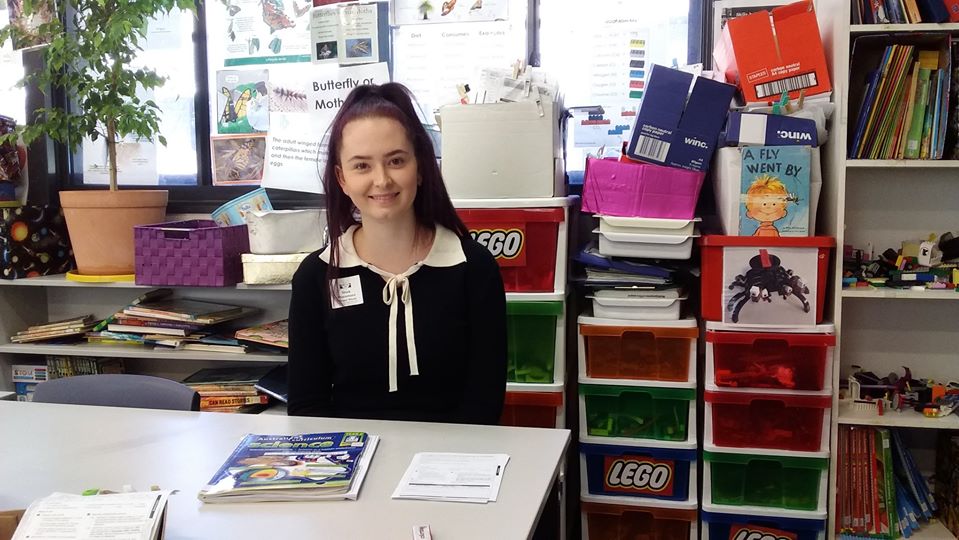
Above: Could this be you? An ITAC student on placement for the CHC30221 Certificate III in School Based Education Support – the introductory teacher aide course that will get you career off and running. ITAC students in the CHC30221 Certificate III in School Based Education Support learn strategies to support students in a range of subjects such as in the science classroom pictured above. Strategies relevant to working in the science classroom include brainstorming, mastery learning, problem-based learning, differentiated instruction, chunking, guided learning, prediction, role plays, learning by failure and many others!
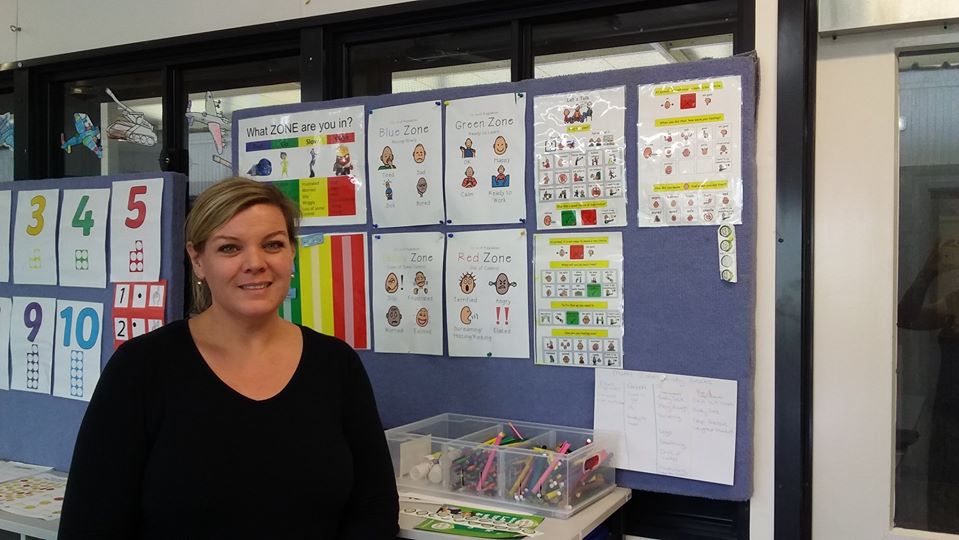
Above: Could this be you? An ITAC student completed the placement for her Teacher Aide Combo in Victoria. Learning everything from the CHC30221 Certificate III in School Based Education Support and the CHC40221 Certificate IV in School Based Education Support, this student landed her dream job in a special needs school as pictured above. You can see aspects of some of the behaviour management and teaching strategies that she helped to develop and implement with students with disabilities and disorders – thanks to the best practice strategies and skills from her nationally recognised teacher aide course with ITAC.
We get this question now and then and we encourage people to enrol in the TAFE system from time to time. There are several good reasons for why TAFE is the preferred provider for some students. For example, if you live in a regional or rural area and there is a TAFE nearby who can offer you regular classes – this may be an option.
The TAFE system has traditionally been known for teaching younger students i.e. high school students. You can easily see this if you have ever walked or driven past a TAFE campus – you will predominantly see teenagers hanging around. TAFE courses are quite often structured similar to a high school and several days per week of attendance is expected.
If you look at some of the pictures of ITAC’s classes on the other hand, almost all of our students are mature adult learners. Many of them have children and work commitments meaning they need a structured yet flexible course. This is why enrolling with ITAC is preferred by most adult learners.
Also known as integration aides in Victoria, teacher aides work in classrooms to support learning and development. Becoming a teacher aide is relatively easy – we recommend a reputable teacher aide course and a higher-level qualification such as the CHC40221 Certificate IV in School Based Education Support or the Teacher Aide Combo. Now you know the starting point – here is what else this article taught us about studying and working as a teacher aide or integration aide in Victoria:
Enrol with a provider who offers an integrated program as this will save you from hundreds of hours of additional assessments.
This article has discussed the key issues, questions and concerns that we receive every day in relation to teacher aide courses in Victoria. We have discussed:
We think we've covered most of what you need to know before enrolling in any of our industry leading teacher aide courses including the recommended Teacher Aide Combo. If, however, you have additional questions or simply need advice relevant to your individual circumstances, please do not hesitate to contact one of our friendly student advisors. If we don’t know the answer – no one will!
Happy training!